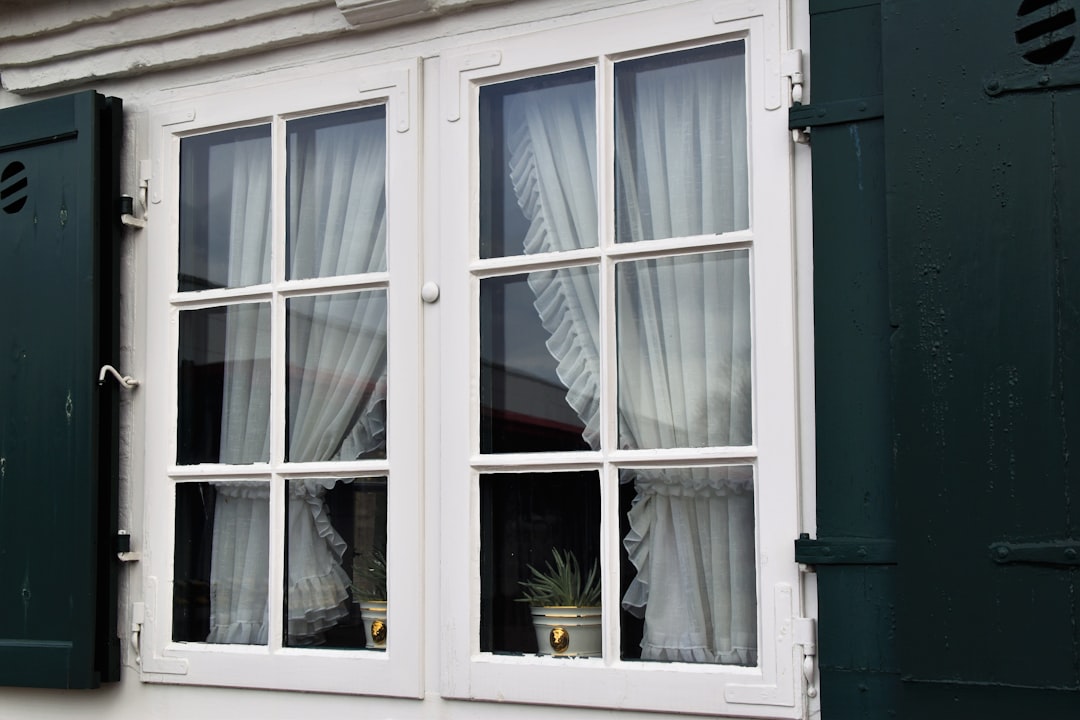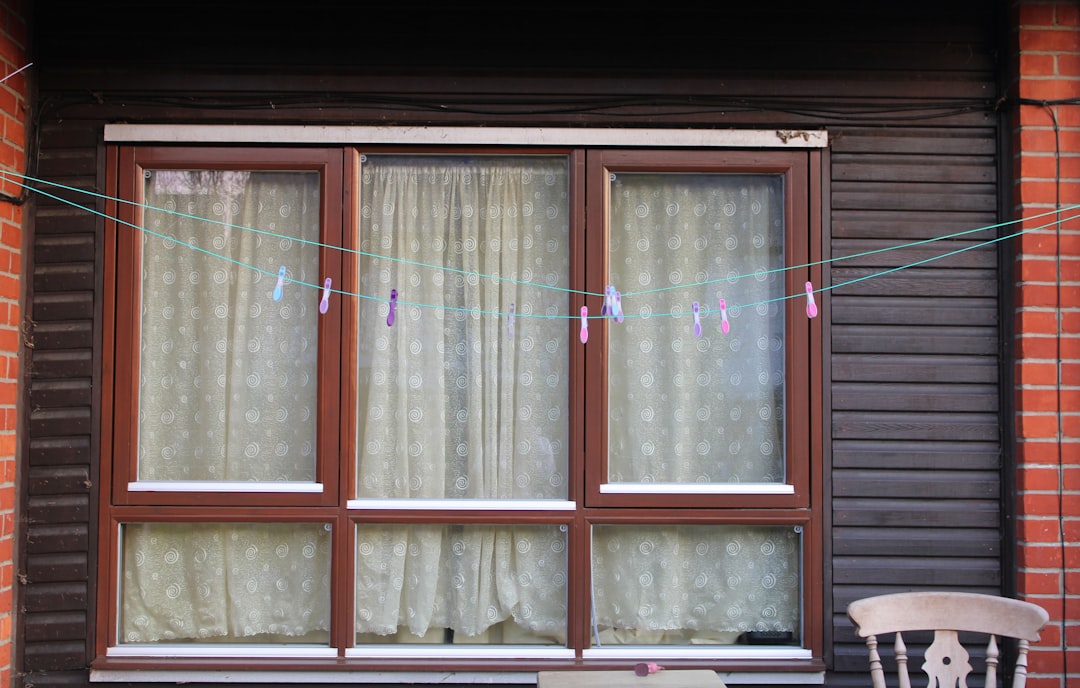

Engage prospects with a scan and streamline customer engagement with FREE QR code marketing tools by Sona – no strings attached!
Create a Free QR CodeFree consultation

No commitment

Engage prospects with a scan and streamline customer engagement with FREE QR code marketing tools by Sona – no strings attached!
Create a Free QR CodeFree consultation

No commitment
In today’s digitally driven world, QR codes have evolved from a novelty to a strategic powerhouse in bridging offline engagement with online action. For window cleaning equipment suppliers, QR codes represent a frictionless, measurable way to boost lead generation and product discovery without requiring an app download or complex setup. Buyers can scan from a catalog, box, or booth banner and land on exactly what they need such as spec sheets, maintenance guides, or instant quotes.
The impact is practical and immediate. QR codes reduce friction at every physical touchpoint, surface buying intent in real time, and feed that intent into your CRM where sales and marketing can act fast. With dynamic QR technology and attribution tools, suppliers can finally connect scans to pipeline, proving which products, placements, and messages actually move revenue.
The right strategy transforms static materials into interactive gateways. From water-fed pole systems to safety gear, every product line can have a dedicated QR path that presents content tailored to the buyer’s context. The result is a clearer view of prospect behavior, more timely follow-up, and campaigns that continuously optimize based on real-world data.

Window cleaning equipment suppliers frequently struggle to identify and engage qualified leads from offline marketing, resulting in missed sales and incomplete analytics. QR codes bridge this gap by turning catalogs, packaging, displays, and trade show assets into lead capture engines that record buyer interest instantly. Replacing analog processes with scan-to-digital experiences improves data quality, accelerates follow-up, and lifts conversion rates across your funnel.
Start by mapping where buyers interact with your print and physical assets, then connect those moments to targeted digital actions. Every scan should resolve to a specific intent, such as requesting a demo of a water-fed pole, downloading an SDS for a chemical, or checking availability for a pure water system. Integrated tracking and CRM workflows make scans actionable within minutes, not days, and help prioritize outreach.
Here’s how:
This playbook replaces outdated, static touchpoints with measurable interactions that drive pipeline growth. Sona QR is built to support every step, from generating dynamic codes and tagging campaigns to syncing scan data with your CRM for fast, coordinated follow-up.

In this category, many high-intent interactions occur offline. Buyers review catalogs at a warehouse counter, flip through brochures at a trade show, or scan a shelf tag while comparing squeegee channels. Without a digital bridge, these moments go untracked and the buyer remains anonymous. QR codes close that gap by enabling instant action and data capture that aligns with exactly what the buyer was considering. For inspiration specific to the industry, explore commercial cleaning ideas that translate well to window cleaning suppliers.
QR codes also raise the quality of the experience. Instead of relying on a sales rep to find the latest product sheet or email an SDS after the fact, the buyer gets what they need on the spot. That speed builds trust and shortens decision cycles. For compliance-sensitive items like safety harnesses or chemicals, dynamic QR codes ensure information updates without reprinting, which reduces risk and supports policy adherence across the buyer’s operation.
When QR codes are woven into everyday materials, the supplier gains a persistent, measurable channel for engagement. The result is fewer missed leads, smarter segmentation, and marketing that adapts rapidly to what buyers are actually scanning.

Not all QR codes serve the same purpose. Selecting the right format for each use case ensures the buyer lands on content that matches their intent while giving your team the data needed for optimization. From everyday web links to tracked forms and contact handoffs, the mix you choose determines both experience and analytics quality.
Dynamic QR codes are particularly effective for this industry. With product specs, pricing, and compliance information changing regularly, dynamic codes let you update destinations post-print and add UTM parameters to trace source, location, and campaign. Use static codes for evergreen resources like general care guides, and use dynamic codes when you need flexibility, personalization, or retargeting.
With dynamic QR codes managed in a platform like Sona QR, you can generate all of these formats, update destinations without reprinting, and analyze performance across campaigns, products, and audiences.

Growth happens where offline attention meets a timely digital path. Window cleaning equipment suppliers often have more of these opportunities than they realize. Map your top physical touchpoints, then place QR codes that match what the buyer likely needs in that moment. The best placements combine high visibility with a clear benefit for scanning.
Prioritize locations where buyers compare options, evaluate safety, or consider larger investments like pure water systems or water-fed poles. Also leverage mobile and direct mail touchpoints to capture regional and account-level demand, particularly for commercial contracts and recurring supply orders.
Aligning codes with these high-impact zones creates a consistent offline-to-online bridge. You will capture interest that previously vanished, understand which assets perform, and allocate budget toward channels that move buyers forward.

Practical, well-scoped use cases are the foundation of an effective QR program. Start with actions that mirror common buyer needs, then measure how each scan translates into deeper engagement or revenue. The best early wins tend to be close to the point of consideration or post-purchase support.
Use QR codes to simplify the leap from curiosity to commitment. Shorten the time it takes to find specs, verify safety, request pricing, and reorder consumables. Each scan not only helps the buyer but also tells you exactly what kind of value they are seeking, which is essential for segmentation.
Suppliers that implement these use cases typically see a noticeable lift in engagement, with scan-to-visit rates often in the 20 to 40 percent range when CTAs are clear and placement is thoughtful. Over time, the data also shows which product lines attract the most interest, allowing you to promote the right mix and streamline inventory.
Each scan is a behavior signal that can power more relevant marketing. By deploying multiple codes across touchpoints, you can build segments based on intent, channel, and timing. This creates a retargeting strategy fueled by what buyers actually do, not assumptions about what might interest them.
For window cleaning equipment suppliers, meaningful audience distinctions often include contractor type, facility use case, and product complexity. For example, a scanner of a water-fed pole comparison deserves different follow-up than someone who downloads a detergent SDS. The more specific your tags, the more effective your nurture tracks will be.
With Sona QR, each QR becomes a smart entry point into your funnel. Use the platform’s tagging and integrations to enrich contacts, build custom lists, and orchestrate retargeting based on real behavior, such as contractors vs. facility managers or distributors vs. end users.
QR codes bring cohesion to an otherwise fragmented marketing ecosystem. They unify print, in-store, events, and out-of-home with digital experiences that are quick to access and easy to measure. This connected approach is especially useful for suppliers balancing trade shows, catalogs, dealer networks, and direct sales.
Work backward from your most common touchpoints, then assign each a purposeful QR journey. When every channel funnels into a measurable action, your team can attribute outcomes, double down on the highest-performing content, and retire assets that do not pull their weight.
A centralized platform like Sona QR lets you manage codes across channels, monitor performance, and sync scan data to your CRM. The result is a continuous loop of learning and optimization that raises campaign ROI over time.
A structured campaign process ensures you move from idea to measurable impact without gaps in tracking or follow-up. Use the steps below to plan, launch, and optimize QR campaigns tailored to window cleaning equipment buyers.
Select one or two focused scenarios that tie directly to revenue or retention. For example, drive demo requests for a new water-fed pole line or gather feedback on an eco-friendly detergent that targets schools and healthcare facilities. Avoid generic “learn more” codes that create clicks without intent.
Clarify the physical placements for each use case, such as shelf talkers near poles and brushes, box inserts for SDS downloads, or trade show banners offering a scan-to-quote incentive. Determine the desired post-scan action and how it will be measured in your analytics and CRM.
Choose between static and dynamic based on the need for flexibility and tracking. Static codes are suitable for evergreen assets like maintenance checklists. Dynamic codes are best for any campaign that needs updates, attribution, or segmentation, such as promotional pricing or region-specific offers.
Define the destination for each code. Use landing pages built for mobile with a single, obvious action. Add UTM parameters to attribute scans by channel, product line, and audience. If you need identity resolution or remarketing, dynamic codes through Sona QR provide the needed infrastructure.
Design for visibility in the environments where scanning happens. Keep codes large enough for distance viewing on trade show walls and high contrast on packaging and shelf tags. Include brief, benefit-driven CTAs like “Scan for SDS” or “Scan for contractor pricing” next to the code.
Test with different devices, angles, and lighting. Account for gloves, wet hands, and low-light warehouse conditions that can affect scan reliability. Validate that every code resolves to the correct destination and that tracking parameters populate as intended in your analytics.
Roll out your codes where they will have the biggest impact for your audience. For suppliers, this often means catalogs, in-store signage, packaging, and trade shows. Complement with fleet vehicles for regional awareness and direct mail for account-based outreach.
Coordinate deployment with sales and operations. Ensure store staff and booth teams know the value of each code and can explain it succinctly. Stagger deployments if needed to isolate performance by channel and identify which placements deliver the best scan-to-lead conversion.
Monitor scans in real time by placement, product, and audience segment. Connect Sona QR to your CRM to enrich contacts, trigger workflows, and alert sales reps when high-value scans occur. Review early results and troubleshoot any codes with low engagement or high bounce rates.
Iterate your creatives, CTAs, and destinations. A/B test landing page headlines, offer framing, and visual treatments. Use results to guide budget allocation and future print runs, pausing underperformers and replicating top performers across similar contexts.
Traditional analytics rarely capture the real impact of offline materials. Knowing that 500 brochures were handed out provides little insight into how they influenced pipeline. QR codes change the equation by translating offline engagement into digital signals that you can measure, attribute, and act on. For window cleaning equipment suppliers, this means finally seeing which products and placements drive high-quality conversations and closed deals.
Go beyond counting scans and focus on what happens next. Track how many scanners view multiple pages, request a quote, book a demo, or reorder consumables. Attribute outcomes back to the campaign and placement. When identity resolution is supported, convert anonymous scans into known accounts and decision makers, raising the precision of your follow-up. Deepen methodology with offline attribution.
With Sona QR and Sona.com, you can:
This analytics workflow transforms QR codes into a performance channel. Scans become signals, signals become conversations, and conversations become revenue. Your team gains the clarity to invest where it counts and the agility to adapt quickly.
Small improvements in design, placement, and process can produce outsized gains in scan rates and conversions. Focus on clarity, immediacy, and relevance. Make every scan feel like a shortcut to value, and tie each interaction to a follow-up that keeps momentum moving toward purchase or reorder.
Pick the tips that align with your most common materials and buyer journey stages. Train your staff to promote the benefit of scanning, not just the existence of a QR code. The combination of strong CTAs and knowledgeable teams consistently outperforms passive placements.
These practices reduce missed opportunities, sharpen attribution, and boost ROI across print-heavy channels. You can generate and track your first QR codes for free with Sona QR, then scale what works using integrated analytics and CRM syncing.
QR codes are more than digital shortcuts. They are a strategy for connecting offline interest to online action and measurable outcomes. For window cleaning equipment suppliers, they turn every catalog, package, and booth into a performance-driven touchpoint that reveals buyer intent, speeds decisions, and elevates the customer experience.
Here is what they deliver when implemented thoughtfully:
Adopting QR codes with dynamic management, analytics, and CRM integration gives suppliers the tools to capture demand at the source and convert it into measurable results. Sona QR offers an end-to-end platform for generating, tracking, and optimizing codes, while Sona connects engagement to pipeline and revenue. Start creating QR codes for free.
QR codes have transformed window cleaning equipment suppliers from simple product providers into dynamic, customer-centric businesses. By integrating QR codes, suppliers can streamline product information access, showcase usage tutorials, and offer instant support—enhancing the customer experience while driving smarter inventory and sales management. Imagine your clients effortlessly scanning a code to access specs, maintenance guides, or exclusive deals, turning every interaction into a high-value engagement.
With Sona QR, you gain the power to create dynamic, trackable QR codes in seconds, update content instantly without reprinting, and connect every scan to actionable insights that fuel growth. This means better customer acquisition, improved service delivery, and measurable ROI—all from a simple scan. Start for free with Sona QR today and transform how your window cleaning equipment business connects, converts, and thrives.
The article does not list specific suppliers but focuses on how window cleaning equipment suppliers can use QR codes to boost lead generation and engagement.
Choosing the right equipment involves understanding buyer needs at key touchpoints and using tools like QR codes to access detailed specs, maintenance guides, and demos tailored to different products such as water-fed poles and safety gear.
Essential tools include water-fed pole systems, safety gear, squeegees, channels, and consumables like rubber refills and detergents, with QR codes facilitating access to product info and reorder options.
While the article does not specify vendors, it suggests using QR codes on packaging, catalogs, and displays to quickly access quotes, bulk pricing, and product comparisons that help find quality equipment at good prices.
The article highlights the use of dynamic QR codes as a key innovation, enabling interactive content, real-time tracking, and seamless offline-to-online buyer engagement for window cleaning equipment.
QR codes turn offline assets like catalogs and trade show banners into lead capture tools that record buyer interest instantly, improve data quality, accelerate follow-up, and increase conversion rates.
Dynamic QR codes are recommended for flexibility and tracking product updates and campaigns, while static codes suit evergreen resources like maintenance guides.
Place QR codes on product packaging, shelf tags, trade show booths, delivery vehicles, direct mail flyers, and point-of-sale displays where buyers compare options or consider purchases.
QR codes provide instant access to up-to-date safety guidelines, SDS documents, and maintenance logs without reprinting materials, reducing risk and supporting compliance.
Yes, QR codes on consumables and equipment tags can open one-click reorder pages and trigger warranty registration, onboarding emails, and care schedules to increase product lifetime value.
Using platforms like Sona QR, suppliers can track scans by time, location, product, and campaign source, sync data with CRMs, measure engagement, and attribute revenue to specific offline touchpoints.
The process includes selecting focused use cases, choosing QR code types, designing and testing codes for visibility and reliability, deploying across key channels, and continuously tracking and optimizing performance.
They provide instant, frictionless access to relevant content like spec sheets, videos, and quotes, speeding decision-making and building trust through real-time information delivery.
Use cases include equipment comparisons, instant quote requests, compliance info access, warranty registration, product support, and one-tap reordering of consumables.
By tagging scans with buyer intent, channel, and timing data, suppliers can build high-value audience segments and sync this with CRM and ad platforms to deliver tailored follow-up and retargeting campaigns.
Use Sona QR's trackable codes to improve customer acquisition and engagement today.
Create Your FREE Trackable QR Code in SecondsJoin results-focused teams combining Sona Platform automation with advanced Google Ads strategies to scale lead generation

Connect your existing CRM

Free Account Enrichment

No setup fees
No commitment required

Free consultation

Get a custom Google Ads roadmap for your business






Launch campaigns that generate qualified leads in 30 days or less.
